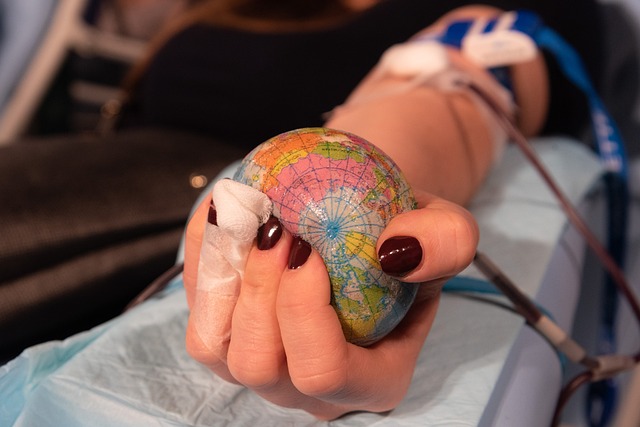Community Engagement to Maintain Reliable Donor Networks Worldwide
Sustaining reliable donor networks requires active community engagement that connects volunteers with collection programs, explains apheresis and screening processes, and supports logistics, cold storage and traceability practices. Local services benefit when donors understand safety, regulation, antibodies and immunoglobulin roles.

Community involvement is a cornerstone of sustaining dependable donor networks worldwide. Effective engagement builds trust, encourages repeat donors, and fosters transparency around collection and screening practices. When communities understand how apheresis and traditional donation pathways contribute to transfusion needs and the manufacturing of immunoglobulin therapies, participation rates stabilize, planning becomes more predictable, and resources for coldstorage and transport are used more efficiently. Clear communication about safety, regulation, and stewardship helps retain donors and supports consistent quality across local services and broader distribution chains.
What is apheresis collection and how does it work?
Apheresis collection separates plasma or specific blood components at the point of donation, returning the remaining elements to the donor. This approach is often used to collect plasma rich in antibodies for immunoglobulin production or to obtain platelet concentrates for transfusion. For community programs, explaining the procedure, expected duration, and eligibility can reduce anxiety and increase turnout. Operationally, apheresis requires trained technicians, calibrated equipment, and protocols that prioritize donor comfort and post-donation monitoring. Regularly scheduled local drives with clear scheduling information and outreach materials improve both first-time participation and repeat donations.
How does screening protect donors and recipients?
Screening integrates donor questionnaires, vital-sign checks, and laboratory testing to detect infectious agents and assess antibody profiles. These steps ensure that collected plasma and blood components meet safety and quality criteria before entering transfusion or manufacturing pathways. Community education that describes the purpose of screening and the confidentiality of results demystifies the process and encourages honest health disclosure. Proper follow-up for donors with reactive tests and clear guidance on deferral periods strengthens public trust. When screening is communicated as part of a shared responsibility, donors are more likely to engage in behaviors that promote safe collection outcomes.
What role do transfusion and manufacturing systems play?
Collected plasma supports transfusion services and the production of plasma-derived therapies, including immunoglobulin used to treat immune deficiencies and certain neurological conditions. Manufacturing relies on predictable, quality-assured raw materials; therefore, steady donor networks are critical. Community initiatives that emphasize the link between regular donations and the ability to meet clinical demand can motivate sustained contributions. Coordination between collection sites and manufacturers—through demand forecasting, scheduled collections, and quality feedback loops—helps align community efforts with production needs and reduces the risk of shortages or waste.
How do logistics, coldstorage, and traceability support supply chains?
Logistics ensure timely movement of collected components from donation sites to processing centers while maintaining coldstorage conditions that preserve plasma stability. Traceability systems record donor and batch information, enabling recalls or investigations if safety issues arise. Practical community-level measures—such as aligning collection dates with transport schedules and providing donors with clear locality-based instructions—reduce delays and spoilage. Investment in reliable cold chain equipment, temperature monitoring, and digital traceability tools supports regulatory compliance and reassures clinicians and patients about product integrity.
What regulations govern quality and safety in donor networks?
Regulation sets minimum standards for collection, testing, storage, and distribution to protect public health. Quality management systems document procedures for screening, equipment maintenance, staff training, and adverse-event reporting. At the community level, adherence to informed consent practices and transparent communication about safety monitoring reinforces ethical standards. Regular audits, accreditation, and accessible quality indicators help maintain public confidence. When communities understand the basis of these regulations, they are more likely to support transparent practices that align local services with national and international quality frameworks.
How does stewardship and community engagement maintain networks?
Stewardship involves respectful, efficient management of donor resources and acknowledges donors’ roles in broader healthcare ecosystems. Community engagement strategies—tailored outreach, partnerships with workplaces, faith groups, and schools, and accessible scheduling—lower barriers and encourage repeat donations. Education about antibodies and the therapeutic value of immunoglobulin can connect donors to real-world patient outcomes without making promotional claims. Follow-up care, recognition programs that respect donor privacy, and feedback on how collections contributed to treatment or transfusion needs strengthen long-term commitment. Inclusive programs that address transportation, language, and cultural barriers also expand the donor base and increase resilience against local supply disruptions.
This article is for informational purposes only and should not be considered medical advice. Please consult a qualified healthcare professional for personalized guidance and treatment.
Community-based efforts to sustain donor networks combine clear communication about apheresis and collection, robust screening and quality systems, dependable logistics and coldstorage, and traceability aligned with regulation. When stewardship is embedded in local practice and engagement prioritizes donor experience and transparency, networks become more reliable, benefiting both local services and global manufacturing and transfusion systems.






